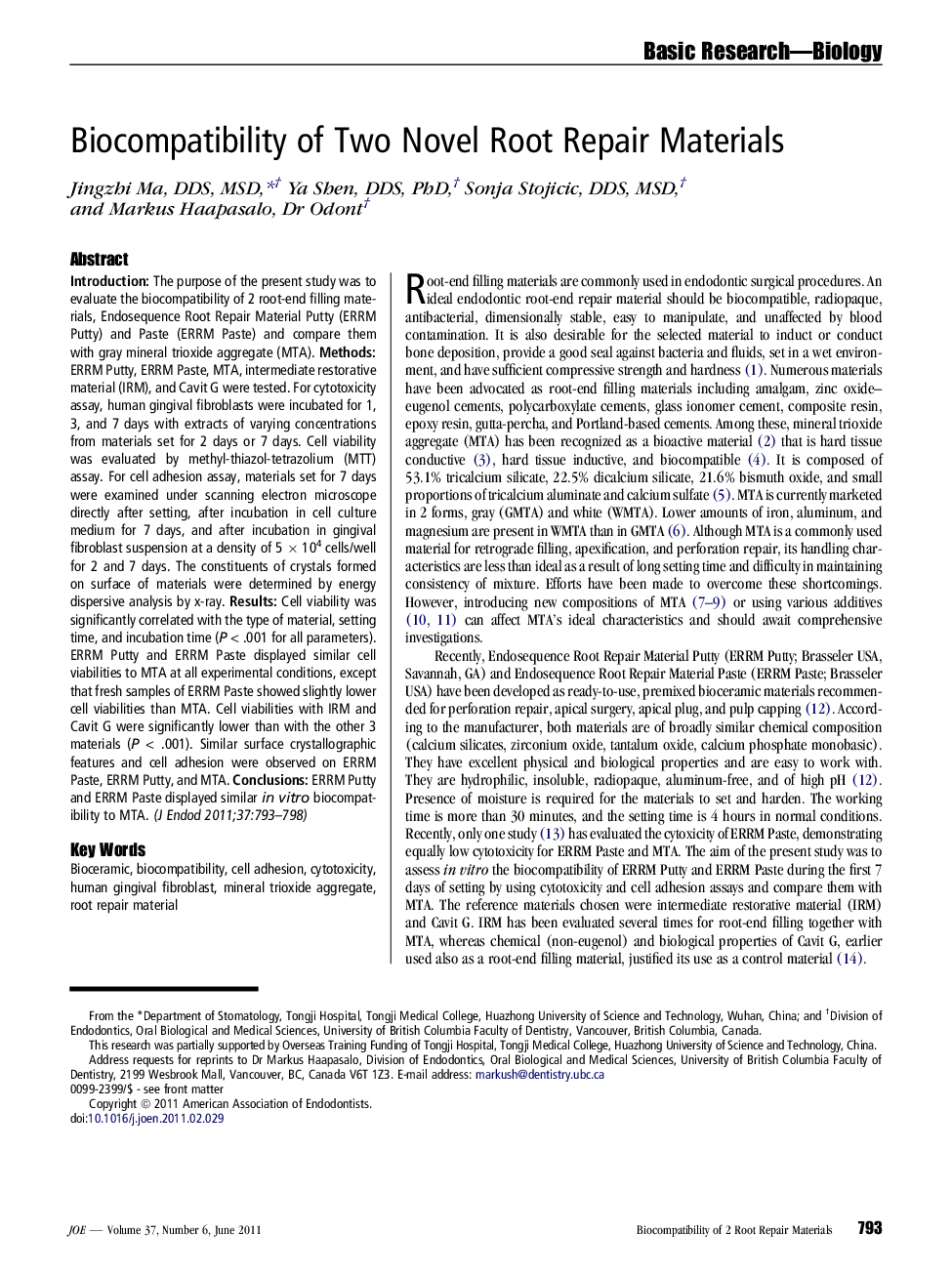| Article ID | Journal | Published Year | Pages | File Type |
|---|---|---|---|---|
| 3149124 | Journal of Endodontics | 2011 | 6 Pages |
IntroductionThe purpose of the present study was to evaluate the biocompatibility of 2 root-end filling materials, Endosequence Root Repair Material Putty (ERRM Putty) and Paste (ERRM Paste) and compare them with gray mineral trioxide aggregate (MTA).MethodsERRM Putty, ERRM Paste, MTA, intermediate restorative material (IRM), and Cavit G were tested. For cytotoxicity assay, human gingival fibroblasts were incubated for 1, 3, and 7 days with extracts of varying concentrations from materials set for 2 days or 7 days. Cell viability was evaluated by methyl-thiazol-tetrazolium (MTT) assay. For cell adhesion assay, materials set for 7 days were examined under scanning electron microscope directly after setting, after incubation in cell culture medium for 7 days, and after incubation in gingival fibroblast suspension at a density of 5 × 104 cells/well for 2 and 7 days. The constituents of crystals formed on surface of materials were determined by energy dispersive analysis by x-ray.ResultsCell viability was significantly correlated with the type of material, setting time, and incubation time (P < .001 for all parameters). ERRM Putty and ERRM Paste displayed similar cell viabilities to MTA at all experimental conditions, except that fresh samples of ERRM Paste showed slightly lower cell viabilities than MTA. Cell viabilities with IRM and Cavit G were significantly lower than with the other 3 materials (P < .001). Similar surface crystallographic features and cell adhesion were observed on ERRM Paste, ERRM Putty, and MTA.ConclusionsERRM Putty and ERRM Paste displayed similar in vitro biocompatibility to MTA.
